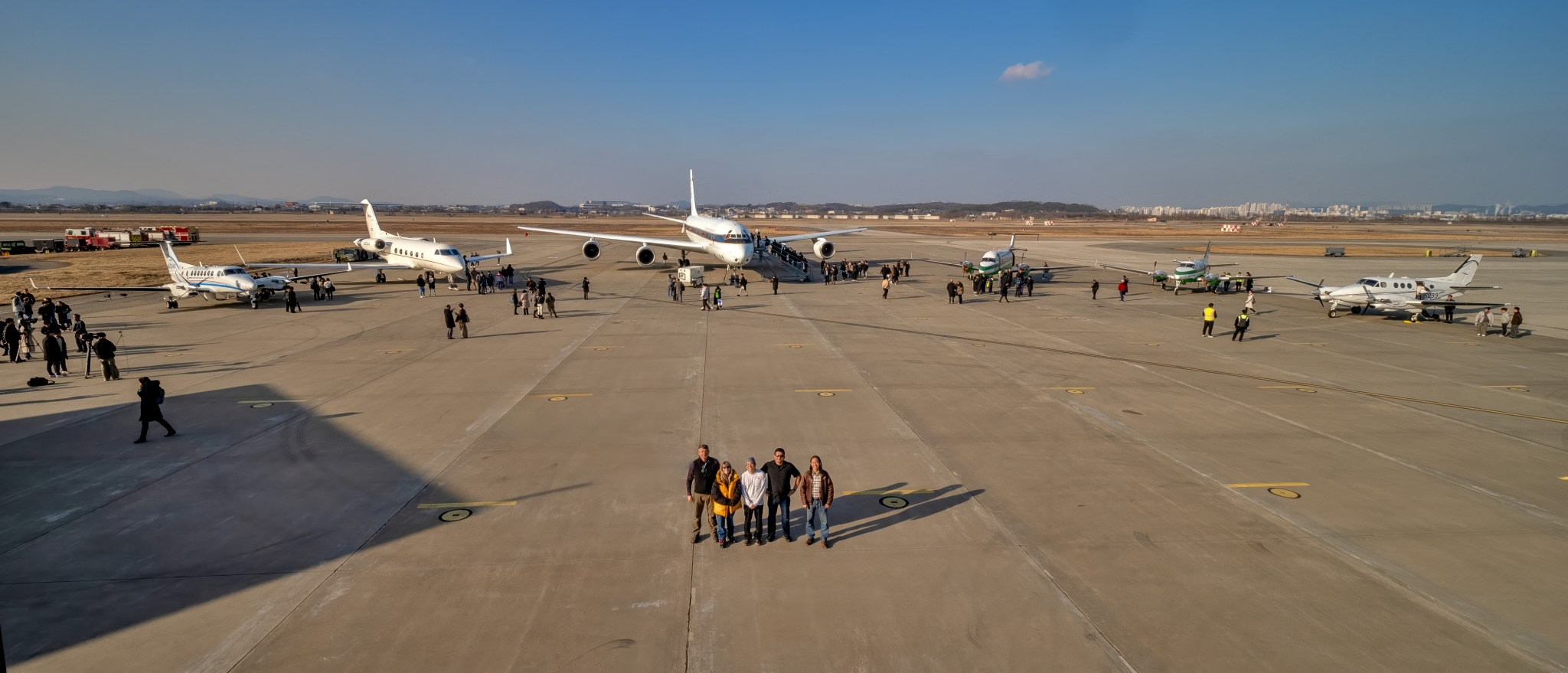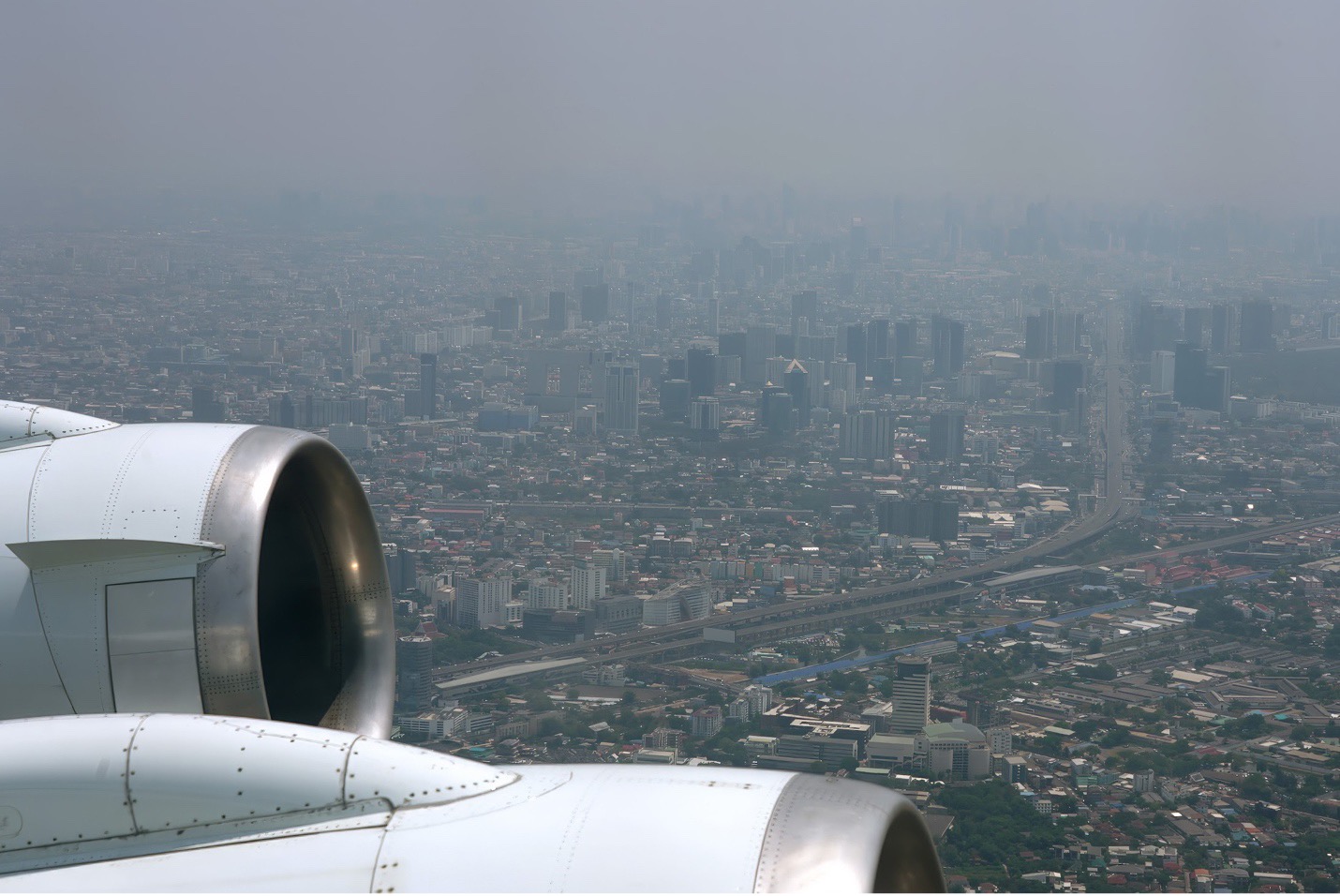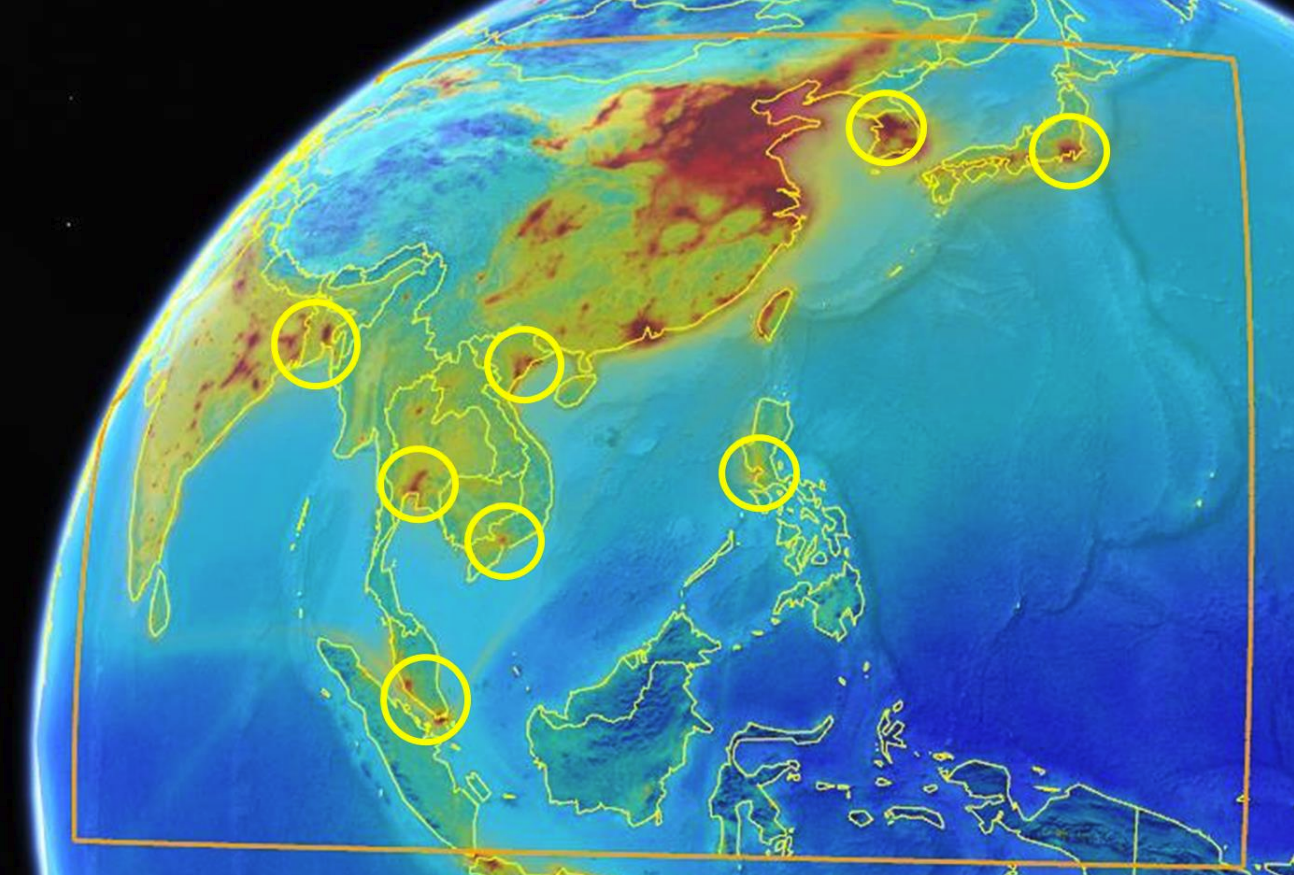Tracking the spread of harmful air pollutants across large regions requires aircraft, satellites, and diverse team of scientists. NASA’s global interest in the threat of air pollution extends into Asia, where it works with partners on the Airborne and Satellite Investigation of Asian Air Quality (ASIA-AQ). This international mission integrates satellite data and aircraft measurements with local air quality ground monitoring and modeling efforts across Asia.
Orchestrating a mission of this scale requires complicated agreements between countries, the coordination of aircraft and scientific instrumentation, and the mobilization of scientists from across the globe. To make this possible, ARC’s Earth Science Project Office (ESPO) facilitated each phase of the campaign, from site preparation and aircraft deployment to sensitive data management and public outreach.
“Successfully meeting the ASIA-AQ mission logistics requirements was an incredible effort in an uncertainty-filled environment and a very constrained schedule to execute and meet those requirements,” explains ASIA-AQ Project Manager Jhony Zavaleta. “Such effort drew on the years long experience on international shipping expertise, heavy equipment operations, networking and close coordination with international service providers and all of the U.S. embassies at each of our basing locations.”
Understanding Air Quality Globally
ASIA-AQ benefits our understanding of air quality and the factors controlling its daily variability by investigating the ways that air quality can be observed and quantified. The airborne measurements collected during the campaign are directly integrated with existing satellite observations of air quality, local air quality monitoring networks, other available ground assets, and models to provide a level of detail otherwise unavailable to advance understanding of regional air quality and improve future integration of satellite and ground monitoring information.
ESPO’s Mission-Critical Contributions
- Facilitating collaboration between governmental agencies and the academic community by executing project plans, navigating bureaucratic hurdles, and consensus building.
- Mission planning for two NASA aircraft. AFRC DC-8 completed 16 science flights, totaling 125 flight hours. The LaRC GIII completed 35 science flights, totaling 157.7 flight hours.
- Enabling international fieldwork and workforce mobilization by coordinating travel, securing authorizations and documentation, and maintaining relationships with local research partners.
- Managing outreach to local governments and schools. ASIA-AQ team members showcased tools used for air quality science to elementary/middle/high school students. Recent news feature here.

The flying laboratory of NASA’s DC-8
NASA flew its DC-8 aircraft, picture above, equipped with instrumentation to monitor the quality, source, and movement of harmful air pollutants. Scientists onboard used the space as a laboratory to analyze data in real-time and share it with a network of researchers who aim to tackle this global issue.
“Bringing the DC-8 flying laboratory and US researchers to Asian countries not only advances atmospheric research but also fosters international scientific collaboration and education,” said ESPO Project Specialist Vidal Salazar. “Running a campaign like ASIA AQ also opens doors for shared knowledge and exposes local communities to cutting-edge research.”
Fostering Partnerships Through Expertise and Goodwill
International collaboration fostered through this campaign contributes to an ongoing dialogue about air pollution between Asian countries.
“NASA’s continued scientific and educational activities around the world are fundamental to building relationships with partnering countries,” said ESPO Director Marilyn Vasques. “NASA’s willingness to share data and provide educational opportunities to locals creates goodwill worldwide.”
The role of ESPO in identifying, strategizing, and executing on project plans across the globe created a path for multi-sectoral community engagement on air quality. These global efforts to improve air quality science directly inform efforts to save lives from this hazard that affects all.





























